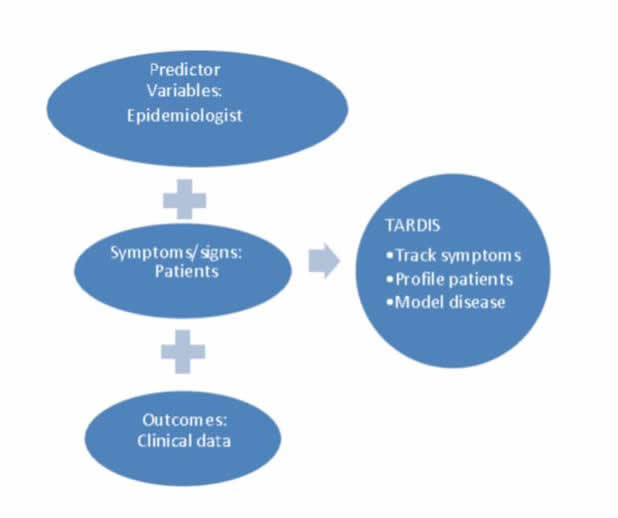See also
- Understanding Gastro-oesophageal Reflux
- Resources
- News
Epidemiology is the study of disease the distribution and control of disease in the population. To create a comprehensive epidemiological profile of a disease or condition, three key elements are defined and populated with data.
1. Predictor variables: These are the measures of exposure or risk. They describe the vulnerability of an individual to developing a condition. These variables are understood and identified by epidemiologists through research.
2. Symptoms and signs of disease: These are the measures of the severity of a disease within an individual. Patients hold, and own, these data and may track their symptoms using questionnaires or web/ mobile application.
3. Outcome measures: These can be categorised as morbidity (e.g. medication, surgery) or mortality. These data are collected by clinicians and hospitals.
The key elements brought together in the use of a smartphone applications as epidemiological tool.
There are numerous health-related smartphone applications (apps). On the whole, these tend to track individual symptoms and signs of disease. To harness smartphone technology to generate a novel and powerful epidemiological tool, a synthesis of the three key elements and their proponents is necessary.
The aim of the project
:
To develop and validate the use of smartphone applications to track activity in relation to disease (TARDIS).
Rationale:
For the TARDIS prototype, we will study gastro-oesophageal reflux in children. GOR is a common, chronic and complex condition affecting up to 5% of children. Treatment comprises multiple, stepwise interventions involving feeding modulations, medications and surgery. Serial assessments are required, in which physicians take clinical histories and progress reports from caregivers. This is repetitive and prone to reporting biases. Paper questionnaires are also used. However, these have limited validity and are inconvenient for serial assessments. The TARDIS [GOR] application will be more effective for serial assessment of individuals and economic for data gathering in large cohorts.
Method:
We will identify demographic, co-morbid and symptom variables relevant to the description of GOR. We shall develop and pilot a TARDIS application for GOR, thus demonstrating the use of smartphone applications as patient-held epidemiological data collection tools.
We shall develop questionnaires to collect these data online. We shall develop a smartphone app to track symptom episodes. We shall pilot the application at our institution and partner hospitals allowing patients and clinicians to populate the database. Individual profiles will be accumulated to a central database, collating longitudinal and cross- sectional data on the cohort of interest. The resulting database will be used to profile the condition and generate a prognostic risk model.
Results:
The primary outcome of this project is a prototype app, TARDIS for GOR. A TARDIS prototype will illustrate the key components required for developing similar tools for other chronic, complex conditions e.g. epilepsy and asthma. Generically, TARDIS applications collect data remotely, taking advantage of patient-held devices. A marker of impact will be the extension of the TARDIS [GOR] model to other disease conditions. TARDIS applications would also be particularly effective for patients with conditions that are highly visual and change materially over time e.g. psoriasis.
TARDIS applications have potential commercial value as epidemiological tools to profile disease and track treatment response. They will be useful in generating cohorts for the testing of therapeutic products in a remote, high-yield and low-cost way.
